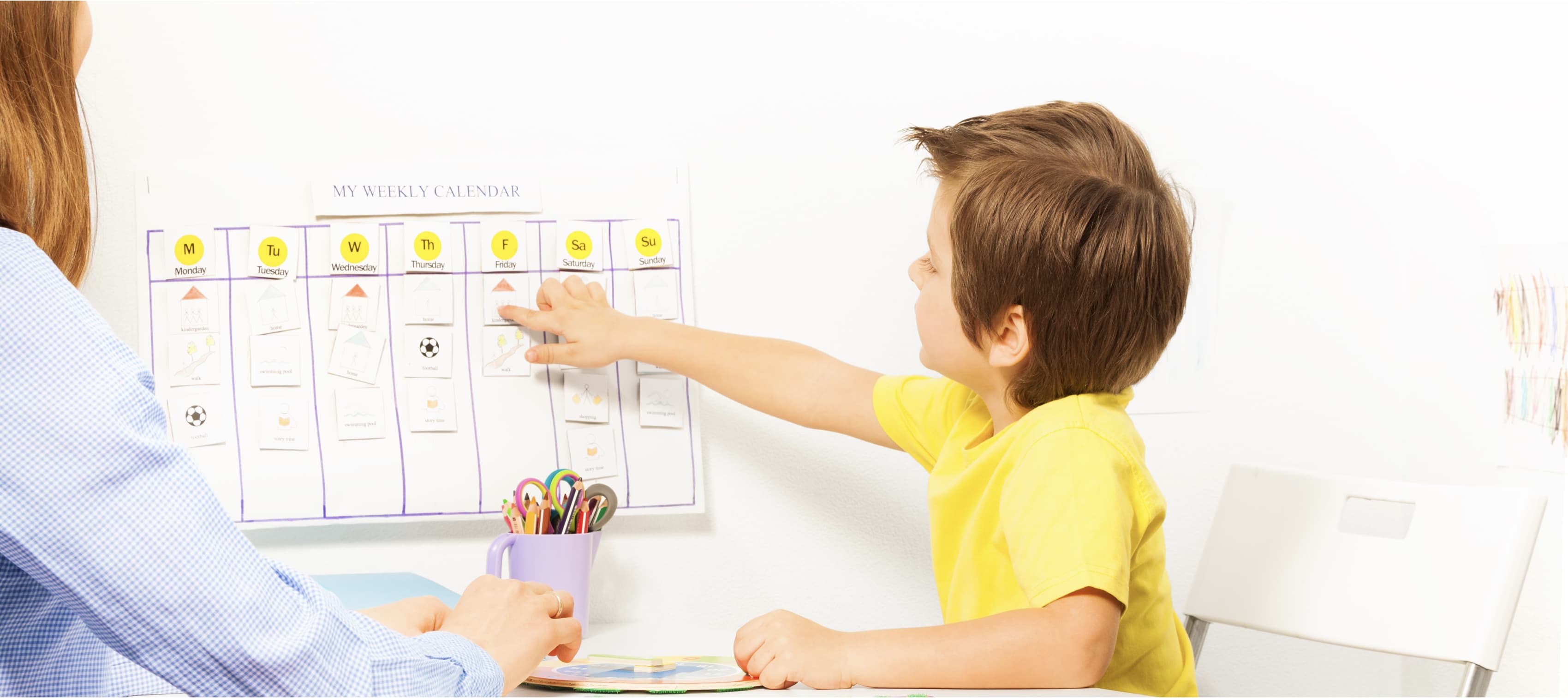Sometimes it may be difficult for your child to learn the order of events. This is actually a common problem which ABA visuals can help with. Maladaptive behaviors such as tantrums, aggression, and self-injurious behaviors may occur due to this difficulty with sequential ordering. Even if you have verbally explained the order of events for the day, it may be difficult for individuals to recall this information readily. This difficulty in the recall is common for many people; independently functioning adults may put alerts in their calendar, alarms, or sticky notes to remember what they need to do or accomplish throughout the day. These alerts, alarms, or notes are visuals. Visuals are any pictures that can communicate information. Visuals are commonly used throughout daily lives and integrated into many instruction manuals and technological support websites. Pictures of how to build furniture or troubleshooting websites with pictures of solutions are visuals to assist us with the completion of tasks. Many people work well with visuals. If we can see it, we can do it.
The use of ABA visuals schedule can help everyone better understand what to expect and therefore reduce the likelihood of problem behaviors occurring. There are two different kinds of schedules that you can have: an activity schedule or a daily schedule. The activity schedule is a sequence of pictures or words representing each step of an activity. If washing hands or brushing teeth are difficult activities for an individual to complete or remember the sequence of, using an activity schedule for just that one task may be extremely beneficial.

A daily schedule will represent activities that an individual will complete for an entire day. For example, you can have a morning schedule that shows waking up, getting dressed, brushing teeth, and so on.
Both the activity schedule and daily schedule can be combined so that the individual can more successfully manage their day and understand complex tasks while reducing problem behaviors. This may help increase their overall independence. Instead of depending on another person to guide them through the day, they may only need to check their schedule to see what to do next.
These visual schedules can take the form of words or pictures. The estimated time of completion for each task can be included to help them learn to tell time as well. In addition, Velcro patches and checkboxes can be placed next to each task on the visual to keep track of what the individual has already done and what they still need to do. Depending on the individual’s motor function, you can use Velcro patches if it is easier than drawing a checkmark. Any activity or schedule can be made into a visual and they are easily customizable to every individual’s needs. Visuals can also fade eventually so that an individual can complete activities without them. They can be faded from the more specific tasks to the general tasks. For example, if originally a visual schedule incorporates each step of brushing the teeth, following mastery of teeth brushing, it can eventually be changed to just say “time to brush teeth” on the visual.
ABA visuals are extremely beneficial for individuals with difficulties with recall or sequential ordering. It is also minimally intrusive and easily incorporated into every individual’s routine.
If you would like to speak with a specialist about ABA therapy, contact us here. Follow us on Facebook, Instagram, LinkedIn, and Twitter to stay on top of our latest updates.






Leave A Comment